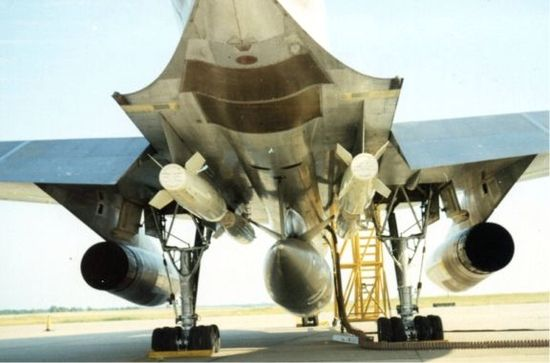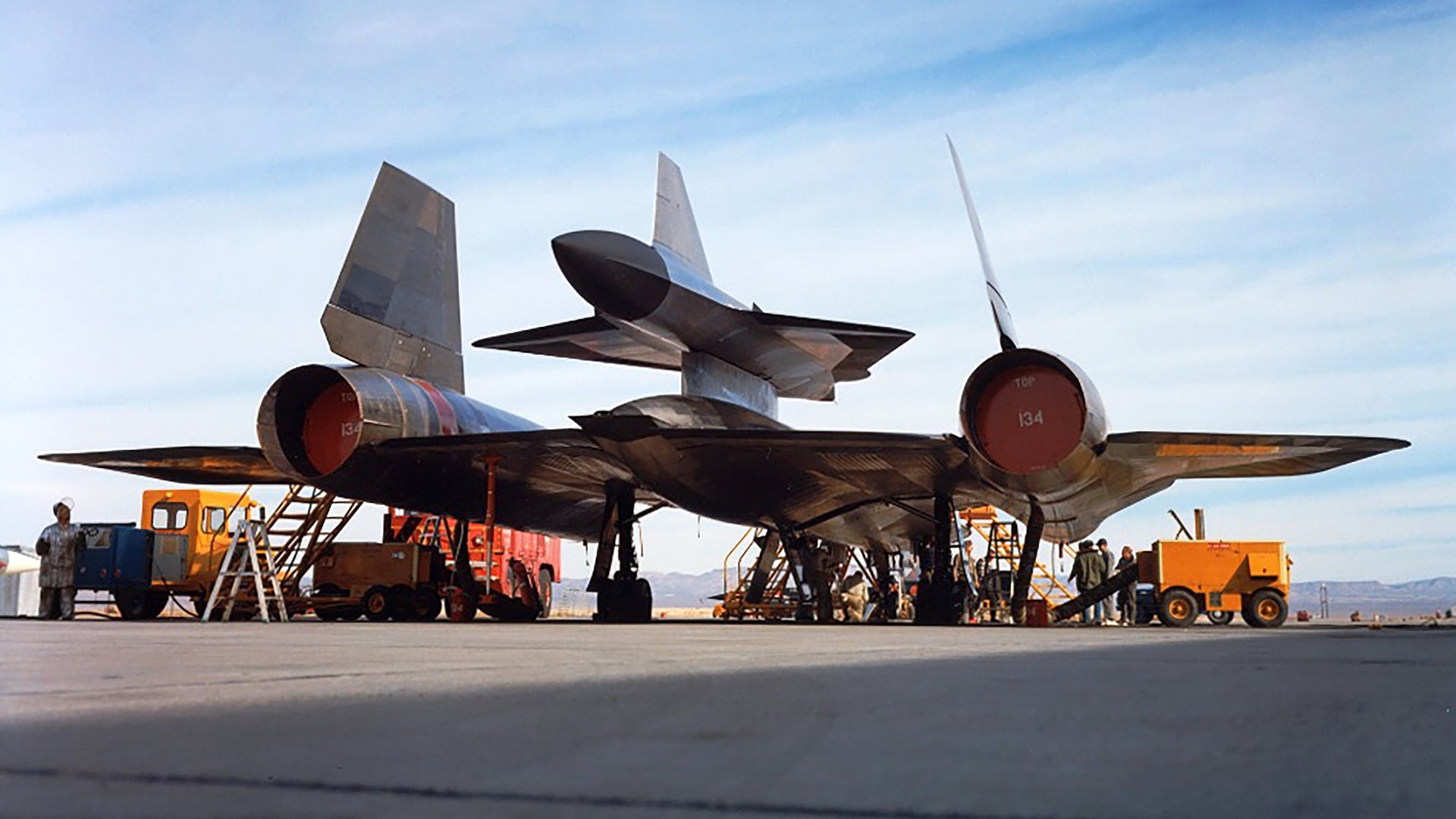isayyo2
Lurker alert
- Joined
- 24 November 2011
- Messages
- 1,131
- Reaction score
- 2,330
Inspired by the Projects that should have been killed at birth thread's recent conversation about the B-1s futility/utility I thought I'd make a "What If" thread if the AMSA/B-1 program never saw flight.
So for whatever reason the AMSA program is not revived by the Nixon Administration, perhaps either for cost reasons or the Combat Lancer deployment impresses Congress more thoroughly? With the FB-111 in full production for 263 units, the idea of a new penetrating bomber is moot for both the Pentagon and on Capital Hill. Rather than develop a new bomber, further funding is given towards weapons procurement and modernization of the B-52 fleet. The new weapons are SRAM (AGM-69) and ALCM (AGM-86A) which are complimentary to each other roles in sending nuclear hellfire while penetrating into the Soviet Union. Both weapons give the FB-111 and B-52 fleets a "Stand-Off" capability with a 1000 km range on ALCM and the ability to fly at low penetrating altitudes without risking the bomber. The B-52 modernization consisted of unifying the fleet in avionics and engines, with avionics consisting of the FB-111s Mark IIB digital suite and engines being the TF33-P-7 with 21,000 pounds of thrust. The new avionics was a rapid jump in reliability and accuracy, it also allowed for the crew to be reduced to four men with the tail gunner replaced by ECM equipment; the crew reduction allowed all members to ride on zero-zero ejection seats and the lower deck converted into a rest area with bunks and provisions. The new turbofans would provide commonality with the C-141 fleet and be a very welcome increase in thrust, range, and noise reduction. For the D-F models thrust was doubled allowing was maximum takeoff weights to be achieved in even the hottest of location, this also saw the end of water injection for SAC bombers. The TF33 upgrade would ideally be applied to the KC-135 fleet as well.
By 1975 SAC's bomber force would look like:
~260 FB-111s: Medium, supersonic bomber for strategic penetration missions
~220 B-52Is: Strategic bombers upgraded mostly from D and F models and some Es. The B-52I mainly serves in the conventional role with the "Big Belly" mod being applied and Pave Track pod fitted on an external pylon. The I model also serves in the sea control role through mining and surveillance, as well as being the first Air Force plane to carry the AGM-84 Harpoon from 1979 onwards. While initially the I model would also carry the AGM-86&69, this was dropped in the SALT I treaty and was confined to free fall nuclear bombs and depth charges.
~290 B-52Js: Strategic bombers upgraded from G and H models. The J model is SACs long range strategic platform armed with AGM-69&86 nuclear stand off missiles and eventually even larger cruise missiles. With the decrease in crew members and increase in amenities, missions over 24 hours would be possible and aerial refueling with 3,000 gallon external tanks could make it a multi-day affair. The J model would eventually be replaced by the B-2, while the I model was retired and remaining J models were converted to the conventional support mission.
Thoughts and alternative paths would always be welcome to hear
So for whatever reason the AMSA program is not revived by the Nixon Administration, perhaps either for cost reasons or the Combat Lancer deployment impresses Congress more thoroughly? With the FB-111 in full production for 263 units, the idea of a new penetrating bomber is moot for both the Pentagon and on Capital Hill. Rather than develop a new bomber, further funding is given towards weapons procurement and modernization of the B-52 fleet. The new weapons are SRAM (AGM-69) and ALCM (AGM-86A) which are complimentary to each other roles in sending nuclear hellfire while penetrating into the Soviet Union. Both weapons give the FB-111 and B-52 fleets a "Stand-Off" capability with a 1000 km range on ALCM and the ability to fly at low penetrating altitudes without risking the bomber. The B-52 modernization consisted of unifying the fleet in avionics and engines, with avionics consisting of the FB-111s Mark IIB digital suite and engines being the TF33-P-7 with 21,000 pounds of thrust. The new avionics was a rapid jump in reliability and accuracy, it also allowed for the crew to be reduced to four men with the tail gunner replaced by ECM equipment; the crew reduction allowed all members to ride on zero-zero ejection seats and the lower deck converted into a rest area with bunks and provisions. The new turbofans would provide commonality with the C-141 fleet and be a very welcome increase in thrust, range, and noise reduction. For the D-F models thrust was doubled allowing was maximum takeoff weights to be achieved in even the hottest of location, this also saw the end of water injection for SAC bombers. The TF33 upgrade would ideally be applied to the KC-135 fleet as well.
By 1975 SAC's bomber force would look like:
~260 FB-111s: Medium, supersonic bomber for strategic penetration missions
~220 B-52Is: Strategic bombers upgraded mostly from D and F models and some Es. The B-52I mainly serves in the conventional role with the "Big Belly" mod being applied and Pave Track pod fitted on an external pylon. The I model also serves in the sea control role through mining and surveillance, as well as being the first Air Force plane to carry the AGM-84 Harpoon from 1979 onwards. While initially the I model would also carry the AGM-86&69, this was dropped in the SALT I treaty and was confined to free fall nuclear bombs and depth charges.
~290 B-52Js: Strategic bombers upgraded from G and H models. The J model is SACs long range strategic platform armed with AGM-69&86 nuclear stand off missiles and eventually even larger cruise missiles. With the decrease in crew members and increase in amenities, missions over 24 hours would be possible and aerial refueling with 3,000 gallon external tanks could make it a multi-day affair. The J model would eventually be replaced by the B-2, while the I model was retired and remaining J models were converted to the conventional support mission.
Thoughts and alternative paths would always be welcome to hear


